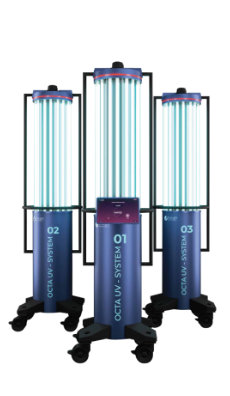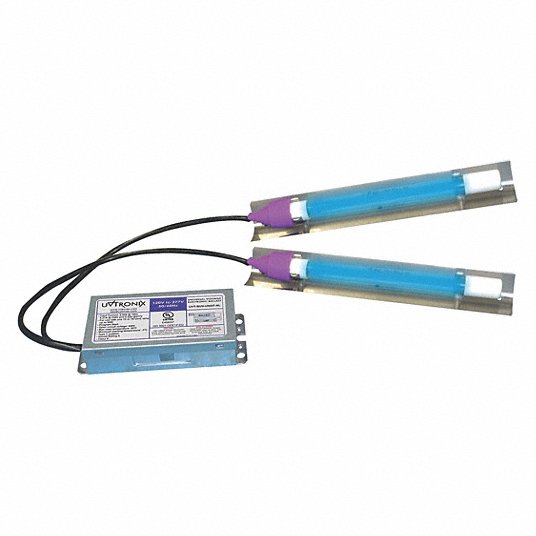Unleashing the Possible of Far UVC Light: Shielding Public Spaces
In an age where public wellness and safety have ended up being critical, the possibility of far UVC light to guard public spaces is a topic of expanding interest. We will explore the future effects of far UVC light in forming public health and safety and security, leaving no uncertainty that this arising modern technology is positioned to transform the method we secure our public spaces.
What Is Far UVC Light?
Far UVC light refers to a particular wavelength of ultraviolet light that has been found to possess one-of-a-kind buildings in regards to its ability to efficiently eliminate microorganisms while being risk-free for human exposure. Unlike typical UV light, which can be damaging to human skin and eyes, much UVC light operates at a wavelength of around 222 nanometers, which is incapable to permeate the outer layer of the skin or the tear layer of the eye.
Research has actually revealed that much UVC light is capable of suspending a large range of microorganisms, including fungis, viruses, and bacteria. This results from its ability to penetrate the outer layers of these microorganisms and damage their DNA or RNA, providing them unable to cause and duplicate infection. Because much UVC light is incapable to get to the living cells in the skin and eyes, it does not create any kind of injury to human tissues.
The one-of-a-kind properties of much UVC light make it a suitable tool for sanitation in public rooms. It can be securely made use of in busy locations, such as medical facilities, schools, airports, and mass transit, to constantly disinfect air and surfaces, reducing the threat of transmission of contagious illness. Furthermore, its non-toxic nature and lack of recurring chemicals make it an eco-friendly choice to traditional disinfection methods.
How Does Far UVC Light Safeguard Public Spaces?
Public areas can be successfully secured by making use of the special residential properties of far UVC light in order to constantly disinfect air and surface areas, lowering the risk of transmission of infectious conditions. Far UVC light, with a wavelength array of 207 to 222 nanometers, has been confirmed to be reliable in eliminating germs, viruses, and other pathogens without damaging human skin or eyes. This makes it an encouraging device for developing safer atmospheres in public rooms such as healthcare facilities, flight terminals, offices, and institutions.
One of the key benefits of far UVC light is its capacity to be utilized constantly in busy areas. far-uvc. Unlike traditional UV germicidal lights, which release UVC light at a wavelength of 254 nanometers that can be unsafe to humans, far UVC light can be utilized safely around individuals. This allows for continuous disinfection in locations where people collect, assisting to reduce the spread of transmittable diseases
Far UVC light can be incorporated right into existing ventilation systems or set up as standalone devices in public spaces. When made use of in air sanitation, far UVC light can target air-borne virus, including viruses, as they circulate in the air.
Applications of Far UVC Light in Public Spaces

One more application of far UVC light is in the sanitation of surface areas. Much UVC lamps can be purposefully placed in public rooms, such as hospitals, institutions, workplaces, and transport hubs, to continuously sanitize often touched surfaces.
Additionally, much UVC light can be used in the disinfection of water. By subjecting water to much UVC light, hazardous microbes present in the water can be counteracted, making it secure for public usage. This application is particularly valuable in public water fountains, pool, and leisure water facilities.
Advantages of Far UVC Light Over Standard Disinfection Approaches
With its diverse functional applications, much UVC light offers numerous benefits over standard disinfection techniques in public spaces. One considerable advantage is its capability to offer continuous sanitation without the need for human treatment. Unlike handbook cleaning approaches, such as wiping surface areas with anti-bacterial remedies or utilizing UV lights run by employees, much UVC light can be mounted in public spaces to continually sanitize the air and surfaces without the requirement for continuous tracking or workforce.
One more benefit of much UVC light is its performance against a wide variety of pathogens. Typical disinfection approaches might not always work against all sorts of bacteria, leaving some locations susceptible to contamination. Far UVC light, on the various other hand, has been shown to be efficient versus a selection of virus, consisting of fungis, infections, and bacteria, making it a trustworthy service for detailed disinfection in public areas.
Furthermore, much UVC light is a non-toxic and ecologically pleasant approach of disinfection. Unlike chemical disinfectants, which may posture health and wellness risks and leave hazardous residues, far UVC light does not produce any type of dangerous byproducts or deposits. It is safe for individuals to be revealed to and does not damage the atmosphere, making it a sustainable selection for disinfection in public areas.

The Future of Far UVC Light in Public Wellness and Safety
As the need for sustainable and efficient sanitation methods proceeds to grow, the future of much UVC light in public health and wellness and safety looks promising. Much UVC light has shown fantastic prospective in effectively killing pathogens, consisting of viruses and germs, without harming human skin or eyes. This makes it a risk-free her response and trustworthy option This Site for continual sanitation in numerous public spaces.
One of the key benefits of much UVC light is its capability to suspend airborne microorganisms (far-uvc). By installing much UVC lights in hospitals, institutions, airports, and various other jampacked locations, we can significantly minimize the threat of condition transmission with the air. This has actually come to be a lot more vital because of current episodes, such as the COVID-19 pandemic
Furthermore, much UVC light can be integrated right into existing air flow systems, permitting for constant disinfection of the air as it distributes. This suggests that even precede with high occupancy rates, the threat of infection can be lowered, supplying a safer environment for everybody.
Along with air disinfection, much UVC light can likewise be used to disinfect surfaces. By incorporating much UVC light modern technology right into independent robots or portable gadgets, we can successfully decontaminate typically touched surfaces, such as doorknobs, lift buttons, and hand rails.
Conclusion
Finally, much UVC light has the possible to change public health and wellness and safety and security by properly decontaminating public rooms. Its capacity to eliminate pathogens without injury to human beings makes it an appealing remedy for avoiding the spread of contagious conditions. With its various advantages over typical sanitation approaches, such as no chemical deposit and constant disinfection, much UVC light holds fantastic promise for future applications in guarding public areas.
In an age where public wellness and safety click for more info have come to be extremely important, the capacity of far UVC light to safeguard public spaces is a subject of growing interest. We will certainly check out the future implications of much UVC light in shaping public health and security, leaving no doubt that this emerging technology is poised to reinvent the way we protect our public areas.
Unlike standard UV germicidal lamps, which discharge UVC light at a wavelength of 254 nanometers that can be damaging to human beings, much UVC light can be made use of safely around individuals - far-uvc.In conclusion, much UVC light has the potential to change public health and wellness and safety by successfully disinfecting public areas. With its countless advantages over standard disinfection methods, such as no chemical residue and continual disinfection, much UVC light holds great assurance for future applications in protecting public rooms